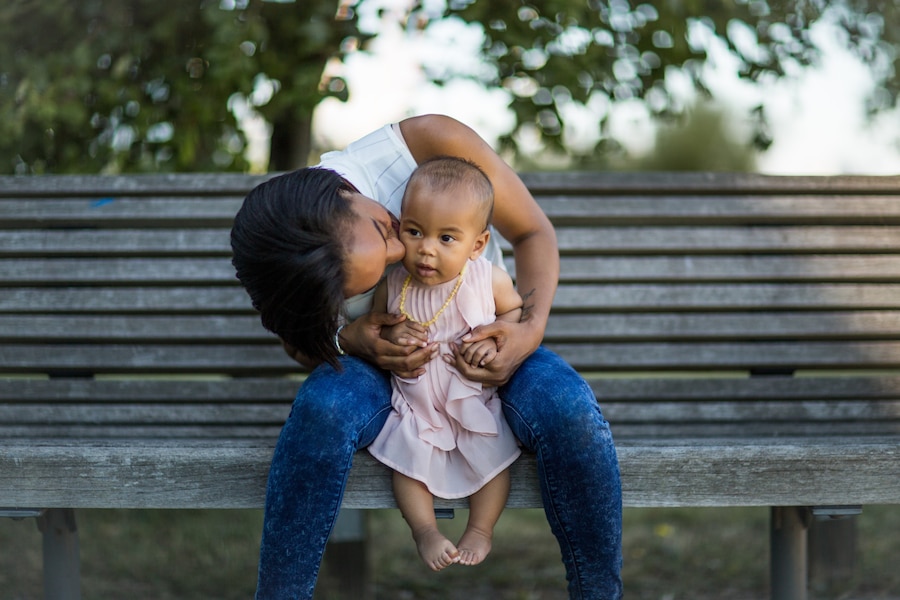All you need to know about discharge after giving birth

Discharge doesn’t stop after you’ve been discharged from hospital
Having a baby means a lot of changes – after all, there’s a whole new person you have to look after. For 9 months, you grow both physically and emotionally to accommodate and nurture. But those changes don’t stop once you’ve given birth.
After giving birth, your body continues to change and adapt. One of the ways it recovers and repairs itself is by getting rid of the extra blood and tissue that helped support the baby (or babies) growing in your uterus. Read on to find out everything you need to know about after birth discharge.
After birth discharge – what is lochia?
The V-Zone, together with the whole body goes through a lot during childbirth, so it’s natural to expect some after birth discharge as your body sheds the uterine lining that was needed during pregnancy, and begins to recover. This type of discharge is called lochia. It is similar to period blood, so you should be familiar and know what to expect! It can last for up to six weeks after birth
Like period blood, it’s not made up of just one thing. Lochia is a combination of blood, mucus, white blood cells, remnants of placenta and pieces of uterine lining. It changes consistency as time goes on. At first, it might be very bloody and then more mucusy after a few weeks.
Lochia after vaginal delivery
Straight after giving birth, the lochia you experience will be mostly blood that is bright or dark red, and smells like typical menstrual blood. It might also contain clots, from the size of a grape to the size of a prune, and sometimes bigger.
Between four and seven days after giving birth, the blood will become closer to a pinkish or brownish colour, and the clots might be smaller or even disappear altogether!
At the end of the first week, your discharge will begin to be more white or yellow in colour. The discharge will decrease until it finally stops around 3-6 weeks later.
Lochia after C-section
If you give birth via a C-section, then you may experience less lochia. That’s because when you have a C-section, your uterus might be manually cleaned out with a swab or sponge to remove the placenta, blood clots and membranes that would instead be shed as lochia in the case of a vaginal birth [1].
Though you may have less lochia, you should still expect to bleed and experience discharge for a few weeks. It will gradually change from red, to brown, then finally to yellow or clear. The good news is it should eventually stop within a few weeks, and your menstrual cycle will kick back into action.
What to do about postpartum discharge
Postpartum discharge is an unavoidable, natural part of giving birth, but it’s not often talked about! Although it can feel daunting to think about on top of having to take care of a new-born, with the support of the people around you and the right products, it should be manageable.
The most important things to remember are to change your pads often to prevent infection, and to stay away from tampons until a medical professional says you are safe to use them again.
You may be given large hospital maternity pads to wear right after you give birth that will take care of your initial heavy bleeding. Then in the first few days after giving birth, an extra absorbent pad like our Maxi Long towel can help. Some women prefer to use disposable or reusable maternity underwear to keep their towels securely in place. This way, you can avoid any accidental surprises appearing in your favourite underwear!
When you start to get less discharge, you can use your favourite towel, such as our Ultra Regular. After a few weeks, you may only need a light liner like our Long liner to take care of your discharge.
When should you see a doctor about after birth discharge
Everyone experiences lochia in a weird and wonderfully different way. It might be messy and unexpected, but your body will heal at its own pace and usually there’s nothing to worry about. There are a couple of things to watch out for though, as you might need medical attention.
Talk to a doctor if your bleeding soaks through a heavy pad in less than an hour, or if intense bleeding doesn’t lessen in a few days after giving birth. If you have very large clots or a high number of them, it could mean that your uterus is having issues with shrinking back to its original size.
Here are some other symptoms to look out for:
- Signs of infection, such as funky-smelling discharge
- A high fever, or chills
- Clammy skin
- Blood that is still bright red and heavy in the second week
- A tender feeling on one or both sides of your tummy
- Feeling dizzy or faint
- A racing, irregular heartbeat
When it comes to post-partum discharge, all you can do is be patient, and take the time to allow your body and mind to recover. Try to take care of yourself by somehow finding time to prioritise your own wellness, asking for help from the people you love if you need it, and whenever in doubt, there’s nothing that a super-absorbent towel can’t help with!
If you’d like to learn more about what can happen after giving birth, read our articles on how your vagina changes after giving birth, and when to expect your first period after pregnancy.
Medical disclaimer
The medical information in this article is provided as an information resource only, and is not to be used or relied on for any diagnostic or treatment purposes. Please consult your doctor for guidance about a specific medical condition.
[References]
note-1[1] https://www.ncbi.nlm.nih.gov/pmc/articles/PMC6363334/


